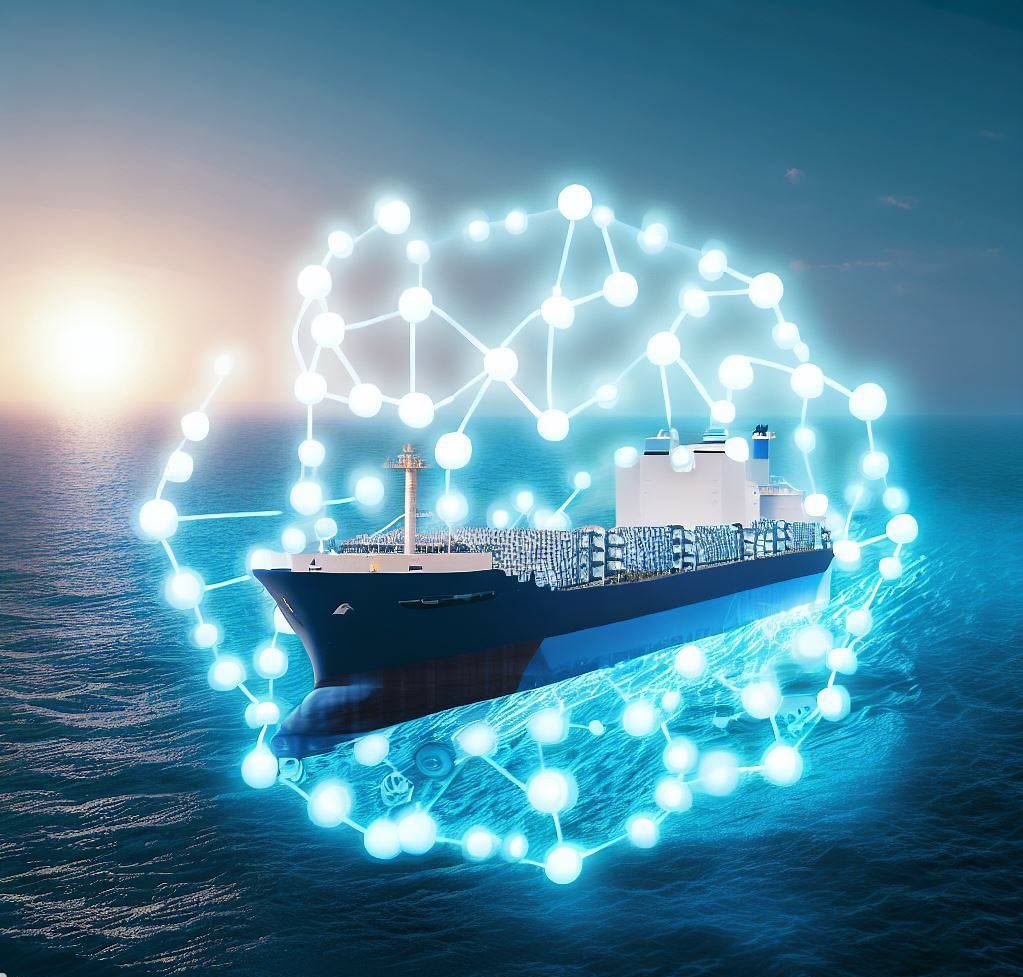
via AI.Nony.Mous
A team of researchers has created a new supply chain model which could empower the international hydrogen renewable energy industry.
Hydrogen has been touted as the clean fuel of the future; it can be generated from water and produces zero carbon emissions. However, it is currently expensive to transport over long distances, and currently no infrastructure is in place to do so.
The new supply chain model, created by researchers in Australia, Singapore and Germany, successfully guides the development of international transport of hydrogen and its embodied energy.
The full report was recently published in the peer-reviewed journal, , Energy Conversion and Management.
Associate Professor Kaveh Khalilpour, from the University of Technology Sydney (UTS) and lead of the report, said supply chain design is critical for making hydrogen economic.
“We looked at the renewable hydrogen export from Australia to Singapore, Japan, and Germany. Surprisingly, the analysis revealed that it matters whether the goal is to export ‘hydrogen the atom’ or ‘hydrogen the energy’. Each choice leads to a different supply chain system.
“Therefore, a thorough understanding of the whole system is necessary for correct decision making,” said Associate Professor Khalilpour.
“The abundance of renewable energy resources in Australia, as well as its stable economy, means the country can attract investments in building these green value chains in our region and even as far away as Europe.”
Hydrogen is expected to help diversify Australia’s renewable energy resource beyond solar and wind power. This is seen as critical to the country’s energy security, as well as necessary for climate change mitigation.
“Hydrogen is just an energy carrier, i.e. not a primary energy source, and thus only a means to an end for transporting renewable energy from one place to another.
“The key business question around the emerging hydrogen economy is whether commodities such as green hydrogen, methanol or ammonia can be exported profitably and competitively also over long distances and across the oceans, thus bringing green energy to other places in the world.
“If this is so, this will also have major international energy and climate policy implications,” said Professor Reinhard Madlener, co-lead of the project, from RWTH Aachen University, Germany.
“Our model suggests that methanol shows great promise as a chemical carrier for exporting renewable energy from Australia at low costs,” said Professor Iftekhar Karimi, from the National University of Singapore, and co-lead of the project.
Original Article: New supply chain model to empower seabound hydrogen economy
More from: University of Technology Sydney | RWTH Aachen University | National University of Singapore
The Latest Updates from Bing News
Go deeper with Bing News on:
Seabound hydrogen economy
- World’s first hydrogen station for commercial trucks opens – is it too late?
FirstElement Fuels has opened the world's first large-scale hydrogen fueling station for heavy-duty commercial trucks at Port of Oakland.
- 4,000% boost! Eco-friendly hydrogen on the horizon
A team of researchers led by Ryuhei Nakamura at the RIKEN Center for Sustainable Resource Science (CSRS) in Japan has made significant strides in the field of sustainable hydrogen extraction. Their ...
- What exactly does a hydrogen economy mean?
The term is thrown around quite a bit, but it isn’t always clear what it is referring to Referring to a hydrogen economy isn’t anything new, having been th ...
- Cabot Corporation and Partners Selected for $5M in U.S. Department of Energy Grant to Support Continued Advancement of Global Hydrogen Economy
Cabot Corporation (NYSE: CBT) announced that the U.S. Department of Energy (DOE), under the Bipartisan Infrastructure Law, selected its application for a $5 million research grant. This grant will be ...
- Hydrogen Hype: 3 Value Stock Picks in the Trillion-Dollar Market
InvestorPlace - Stock Market News, Stock Advice & Trading Tips The world economy is transitioning to a renewable energy narrative. This makes ...
Go deeper with Bing News on:
Hydrogen economy
- Keeping Europe Competitive with Hydrogen: Insights from the Budapest Summit
Jorgo Chatzimarkakis, the German-Greek CEO of Hydrogen Europe, suggested three objectives for the upcoming Hungarian presidency of the Council of the EU: a definition of green hydrogen; a definition ...
- World’s first hydrogen station for commercial trucks opens – is it too late?
FirstElement Fuels has opened the world's first large-scale hydrogen fueling station for heavy-duty commercial trucks at Port of Oakland.
- 4,000% boost! Eco-friendly hydrogen on the horizon
This breakthrough has profound implications for the establishment of a sustainable hydrogen-based energy economy. Water electrolysis using proton exchange membranes (PEMs) is a green electrochemical ...
- Really Cold Hydrogen Could Bring Driving Range Parity with Diesel
The time it takes to fuel a hydrogen-powered fuel cell truck is already on par with diesel. But there is still a yawning gap when it comes to comparable driving range.
- California Welcomes First Big-Rig Hydrogen Fuel Station in U.S.
The country’s first commercial hydrogen fuel station for big-rig trucks is up and running at the Port of Oakland, a step toward what hydrogen proponents see as a clean new future for long-haul ...










